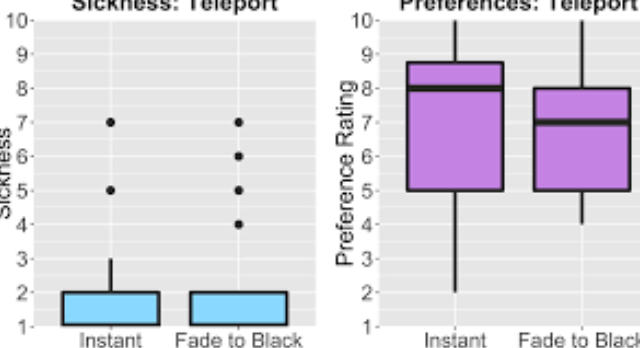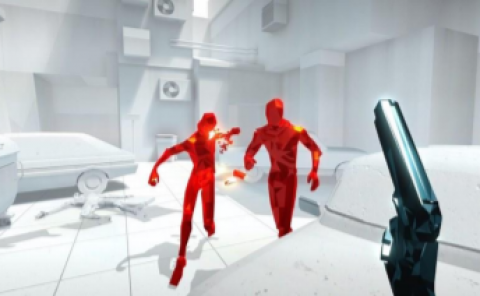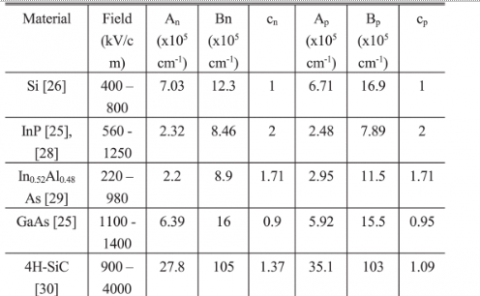Scene Transitions and Teleportation in Virtual Reality and the Implications for Spatial Awareness and Sickness
PubDate: November 2018
Teams: Texas A&M University;University of Florida
Writers: Kasra Rahimi; Colin Banigan; Eric D. Ragan

Abstract
Various viewing and travel techniques are used in immersive virtual reality to allow users to see different areas or perspectives of 3D environments. Our research evaluates techniques for visually showing transitions between two viewpoints in head-tracked virtual reality. We present four experiments that focus on automated viewpoint changes that are controlled by the system rather than by interactive user control. The experiments evaluate three different transition techniques (teleportation, animated interpolation, and pulsed interpolation), different types of visual adjustments for each technique, and different types of viewpoint changes. We evaluated how differences in transition can influence a viewer’s comfort, sickness, and ability to maintain spatial awareness of dynamic objects in a virtual scene. For instant teleportations, the experiments found participants could most easily track scene changes with rotational transitions without translational movements. Among the tested techniques, animated interpolations allowed significantly better spatial awareness of moving objects, but the animated technique was also rated worst in terms of sickness, particularly for rotational viewpoint changes. Across techniques, viewpoint transitions involving both translational and rotational changes together were more difficult to track than either individual type of change.



